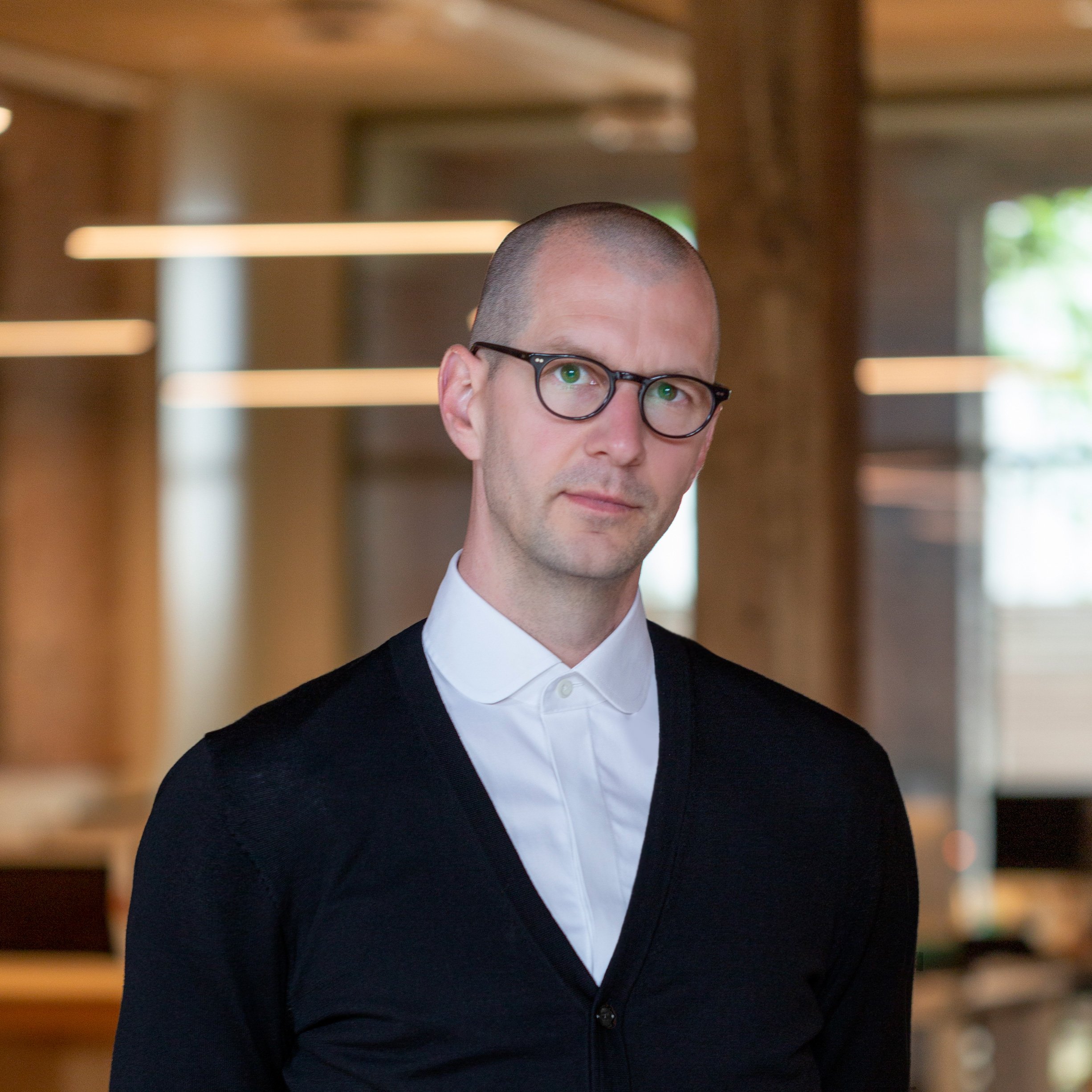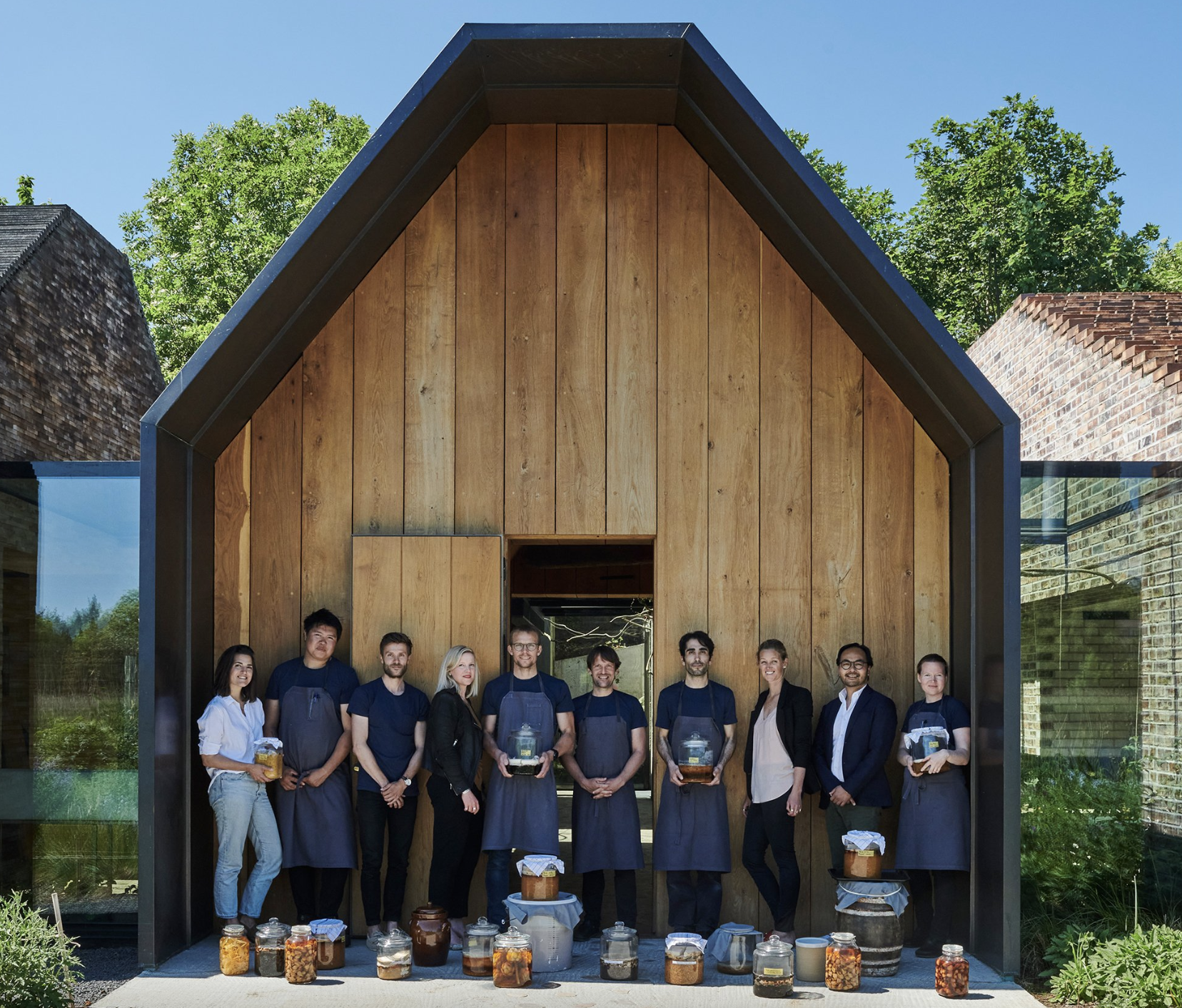Gretel’s Ryan Moore: How We Built a Successful Creative Partnership with Noma
Ryan Moore and team have forged a strong creative partnership with Noma. Images: c/o Gretel.
The email from Danish chef René Redzepi caused Gretel Executive Creative Director Ryan Moore to stop in his tracks. The proprietor of the world’s most famous restaurant had an idea for a new concept, a product for home cooks, something around fermentation, which is central to the Noma ethos. Would Moore and his team be available to help?
The team at Brooklyn design studio Gretel is full of foodies, so this project is like a dream come true, one that keeps happening again and again as the Bedford–Stuyvesant based Gretel has established itself as Noma’s creative partner. This latest endeavor was the branding and identity of the newly-launched Noma Projects. Think of it like experiments from Noma’s test kitchen that you at home can now purchase and enjoy in your pajamas if you so choose. The first product, named Project 0001, is a smoked mushroom garum, an umami-rich, liquid seasoning.
For the bottle’s identity, Gretel blended science and art. They worked with another friend of Noma, illustrator David Shrigley, to create a set of beautiful illustrations to showcase each of the star ingredients in the series. (We never thought a mushroom rendering could look so good.) And the label has a QR code you can click on for cooking tips.
Here, Moore discusses how Gretel has built a partnership with Noma, what they’ve learned from each other creatively, and what must go into a collaboration so it spans years and projects.
The label for the smoked mushroom garum is both playful and practical with a QR code for recipes.
How did you come to work with Noma?
A few years ago, we got an email from the CEO of the Noma group about Hart, a bakery from Richard Hart—the former head baker of San Francisco's famed Tartine—they were about to launch in Copenhagen.
René Redzepi and the team will sometimes invest in and support Noma alums in different ventures, including chefs who branch out on their own. Our work on Hart led to another branding project for Inua, which Noma’s Head of R&D, Thomas Frebel, opened in Tokyo.
During the pandemic, René and his team turned Noma into a pop-up wine bar that also served burgers—all outdoors in the Noma garden. It became a sort of hub for the local community in that time, and there was a desire to keep that going as a standalone restaurant so we helped name and build the brand for what became POPL. Then we did Noma Projects, and we also just finished a collaboration with Artisan Books on a coffee table book that will be coming out for Noma’s 20th anniversary, and have another project going with them now as well. It’s been a series of collaborations and pretty amazing to be working with that group.
What’s it like to work with them?
They have a keen sense of who they are, their purpose and why they're in this business. René starts every project with a conversation—there's never a brief. We'll talk about what the feeling should be for the customer, the cook or the reader, any early or even abstract thoughts around the project—and there's enough trust now that we can bat ideas back and forth in an open and collaborative way.
We love that because there's not a layered approval process. It’s really just getting ideas and sketches in front of a few people on the Noma side and talking them through. Decisions are made over Zoom and we can move pretty quickly.
Meal time! The team at Noma with René Redzepi in the center with hands clasped.
Did you think Noma could become the long-term client it has become?
I think it’s dangerous to let your mind wander too far ahead, where a relationship might lead or what other projects could come on the heels of this one—because none of that will happen if you don't deliver on that first assignment. Ours was a small bakery in Copenhagen so the team stayed focused on that. And it happened to lead to other projects. Trying to think too far down the line can be a trap and can almost add undue pressure, especially when you see “@noma.dk” on an incoming email.
What have you learned from the Noma team about creativity?
René and everyone we met on his team at Noma are really grounded. You might expect a massive ego or somebody who is unavailable and maybe you're talking to their second or third in command, but René is always on the calls if he's part of the project. Nobody dominates the conversation or dictates how things should go.
The thing that I'm always impressed by is the sense of the team and the people, and the emphasis René puts there. In a creative field, all you really have at the end of the day is your team. People are the engine of any creative studio like ours. They are certainly the engine of Noma.
René is hyper-focused on creating this culture of experimentation, creativity, and support within the team so that they can create the food. The dishes are a kind of a byproduct of this experimental culture and the cross-pollination of different ideas, techniques and ingredients.
Illustrator David Shrigley brought the mushrooms to life in the label illustrations.
What was the big question you solved for the Noma Projects smoked mushroom garum?
The biggest question was how closely this line of products should be connected to Noma, or whether it should be connected at all. Then we asked all of these fundamental questions about the business: What is this called? How do we set up ordering? How do we get the word out? What about packaging? We landed on the name Noma Projects because it’s open-ended, meant to be serialized and nods to creativity.
The other big question was how to infuse some of the Noma Fermentation Lab into this product line that has to live on pantry shelves and in the refrigerators of home cooks. The bottles themselves, the form and the tinted glass were a deliberate choice to evoke some of the equipment they use in the lab. The labels nod in that direction as well, the structured layout, un-fussy typography and prominent QR code, which links to recipes and cooking advice. The risograph-inspired palette and of course the illustration language help warm things up and keep them from feeling too clinical.
What’s the hardest part about coming up with a new brand name?
It wasn’t the case in this instance, but trademark screening will kill at least 80% of your ideas and you have to do multiple rounds of this. The world is running out of names, so you have to be resilient and flexible.
Normally you might taste the product to get a better sense of it, but in this case, the product didn’t yet exist and there was also the global pandemic lockdown. How did you articulate the taste in your work?
Yeah we had to take their word for it. A couple of our team members have had the chance to eat at Inua, Hart and Noma, so had some sense of the flavors that can come from fermentation but this was different. Even the chefs would tell us that you really had to taste it to understand.
We actually talked about the flavors in the same way we often describe early animation ideas, lots of description through sounds and hand gestures over Zoom about how the flavors open up and feel and what they can do. Someone referred to garum as a “flavor bomb”—intense and how a few drops opens up whatever dish you’re cooking–and now having tasted this first batch I think that’s almost an understatement.
What’s the biggest bet you made on a Noma project, and how did it work out?
Two things come to mind, hope that’s not cheating.
The first was an alternate route for Noma Projects based on something we saw in the lab. They use those digital labelmakers you can get at office supply stores to label different jars and bottles, so we had this idea that the entire label could be one long ticker-tape that wrapped around the bottle a few times. There was a lot of love for this idea initially but in the end the execution tipped a little too cold and scientific.
And for POPL we proposed a way to infuse some graphic elements of the brand into the interior of the restaurant itself, which did happen amazingly. The architect took some of our low-fi paper-cut ‘ingredients’ and milled them out of really beautiful large-scale ash panels. Really nice high-low contrast there.
What must a successful partnership that spans years and multiple projects have between its partners?
I would say you need to respect each other, challenge each other, surprise each other and tackle each project with as much energy and enthusiasm as the first one.
If you’d like to read more from The Creative Factor, sign up for our newsletter.
Plus, check out the following pieces:




